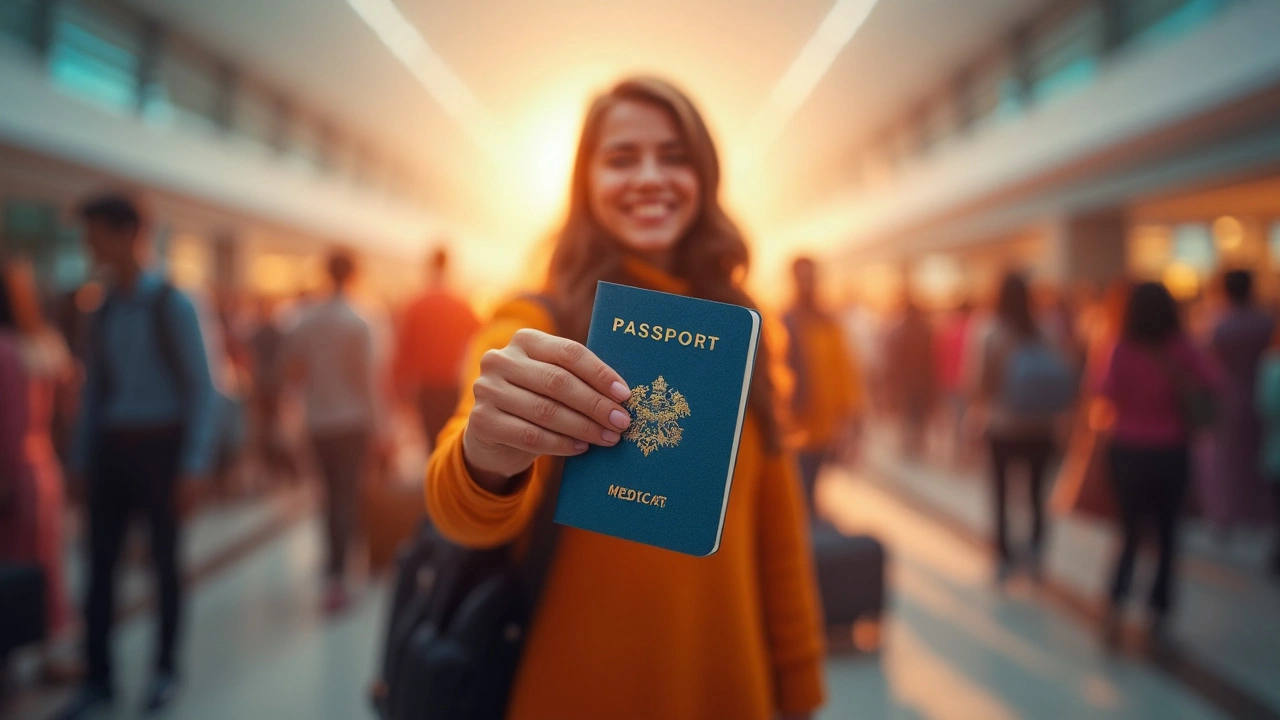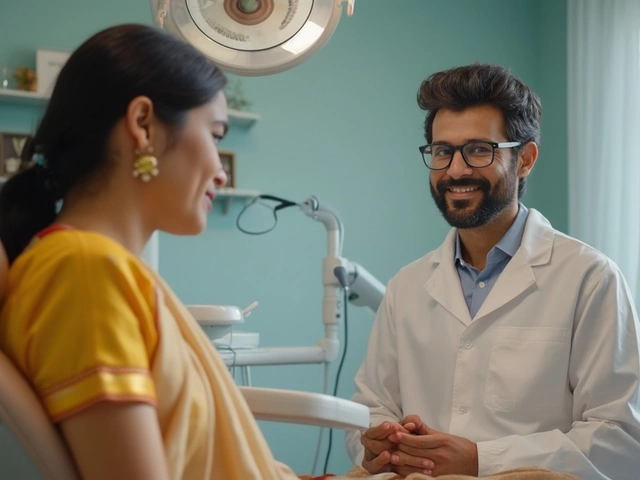Ever thought about traveling abroad for medical treatment? It's more common than you might think. But before you jump on that plane, you need to know about something called a medication passport. What's that, you ask? Essentially, it's a document that outlines all the meds you're taking, which is super useful when crossing borders with your prescriptions.
Think of it like this: Have you ever been stopped at customs and had to explain why you have a giant bottle of pills in your bag? A medication passport makes this whole process smoother. It’s not just for preventing awkward conversations—it ensures healthcare professionals in a foreign country know exactly what you're taking.
- Understanding Medication Passports
- Why You Need One for Medical Tourism
- Steps to Obtain a Medication Passport
- What to Include in Your Medication Passport
- Tips for Traveling with Medication
Understanding Medication Passports
A medication passport is like your travel buddy when you're on a medical tourism journey. It’s a document that lists all the medications you take regularly and includes important details like dosages and the prescribing doctor’s information. Think of it as a health cheat sheet for when you’re far from home.
Why do you need it? Let's say you’re visiting a country where your prescribed medication is not available, or worse, it's controlled and you're not allowed to bring it in. Having a medication passport can prevent misunderstandings with customs or local healthcare providers.
Key Information in a Medication Passport
- Your full name and contact information.
- A detailed list of your medications, including generic names and dosages.
- Prescribing doctor’s contact info in case verification is needed.
- The conditions being treated with each medication to provide context for healthcare professionals abroad.
- Pharmacy details, which might help in locating equivalents or refills abroad.
It's essential to have your passport translated, especially if you're heading to a non-English-speaking country. A certified translation of your medication passport can be a real lifesaver.
Benefits of Carrying a Medication Passport
Besides keeping border control hassle-free, having a medication passport helps local doctors understand your treatment needs better, which can be a huge relief in an emergency. It also streamlines conversations with pharmacists abroad when you need to buy or replace your meds.
In short, it’s not just an extra piece of paper. It’s peace of mind and a practical tool to ensure you get the care you need while enjoying the benefits of medical tourism.
Why You Need One for Medical Tourism
So, you've decided to hop on the medical tourism train—that's awesome! But here’s the kicker: crossing borders with your medications can become a real hassle. That’s exactly where the medication passport comes into play. It's like a lifeline for anyone venturing abroad for healthcare.
When you're traveling for medical treatment, especially to a place where you might not speak the language fluently, ensuring that local doctors understand your existing medications is crucial. It helps them avoid prescribing drugs that might not play nice with your current meds.
Another major advantage? It helps in keeping things legal and above board. Some countries have strict laws about bringing medications across their borders. A medication passport includes all your prescriptions officially documented, making it less likely you’ll run into trouble with customs.
Staying Safe with Your Health
Apart from legal aspects, it's a matter of safety. Imagine having an allergic reaction to a local medication because the healthcare system couldn’t cross-reference your current prescriptions. This document prevents such mishaps.
Facilitate Emergency Situations
Emergencies aren’t planned, right? Having a medication passport ensures that if you find yourself needing immediate medical care, doctors know what medications you’re already on without delay. This speeds up getting the right treatment.
Finally, think of a medication passport like Airbnb reviews—it builds trust. For medical professionals abroad, having documented proof of your prescriptions gives them the confidence to proceed with informed consent.

Steps to Obtain a Medication Passport
Getting a medication passport is easier than you might think. It's about getting the right information together and filling out some forms. Here’s a step-by-step guide to help you get it done.
1. Gather Your Prescription Information
Start by collecting all your prescriptions. Include the name of the medication, dosage, and frequency. Don’t forget to note any over-the-counter drugs or supplements you take regularly.
2. Get a Doctor's Statement
You'll need a statement or letter from your doctor. This document should confirm the necessity of your medications and might include additional details, like your medical history or diagnoses that require these meds. It's a good idea to have this on official letterhead for legitimacy.
3. Check Country Regulations
Research the specific medication laws of the country you’re visiting. Some medications controlled in one country might be illegal or restricted in another. Contact the destination country's embassy if you're unsure.
4. Complete an International Certificate
There are international certificates available for medications, similar to a vaccination card. These can be filled out with your medication details and validated by your healthcare provider. It's optional but can be really handy.
5. Keep Everything Updated
Before you leave, double-check everything is up-to-date. Any changes in your prescriptions or doses should be reflected in your documentation. Keep digital copies on your phone or cloud storage as a backup.
A medication passport might sound complicated, but it's really about being prepared. Not only does it simplify your travel, but it also keeps your health on track, no matter where you are in the world. Safe travels and peace of mind—sounds like a good plan, right?
What to Include in Your Medication Passport
So, you’re about to get that medication passport together. What exactly should you put in it? Don't worry, it’s not as daunting as it sounds. Here's what you need to include to make sure you're covered when traveling for medical purposes.
1. Basic Personal Information
Start with the basics. Your name, address, and contact info are a given. Add a photo of yourself just for good measure. This helps in case any misunderstandings happen with identification.
2. List of Medications
This is the heart of your passport. List all medications you’re currently taking, including over-the-counter ones. Be specific—note down the exact names, dosages, and frequencies.
- Medication name
- Dosage
- Frequency
- Reason for prescription
3. Prescription Documents
Include copies of your prescriptions. These can act as proof that everything you're carrying is legit and prescribed by a healthcare provider. Remember, it’s always better to have physical and digital copies, just in case.
4. Doctor's Notes
Getting a note from your doctor explaining your treatments and why you need the medication can go a long way. It adds a layer of credibility and can help bridge any language gaps.
5. Emergency Contact Information
List contacts who can provide medical or legal help should you find yourself in a jam overseas. This could be family members or friends, and ideally, your doctor’s contact details too.
6. Additional Health Information
If you have any allergies, chronic conditions, or peculiar health concerns, note them. This information is crucial for healthcare providers outside your home country.
| Document | Reason |
|---|---|
| Prescription | Proof of medication |
| Doctor's Note | Explanation of treatments |
Putting this all together might take some time, but it’s worth every second. Once you've got your medication passport ready, you'll not only be ticking all the right boxes for legal purposes but also ensuring your health is well managed across borders. Safe travels!

Tips for Traveling with Medication
Traveling with meds can seem like a hassle, but with the right prep, it’s a breeze. Here are some handy tips to keep your medication passport and meds ready for your medical tourism adventure.
Keep Your Meds in Their Original Containers
This might seem obvious, but keeping prescription meds in their original packaging is crucial. It helps avoid confusion and makes it clear they’re officially prescribed drugs.
Carry Your Medication Passport
Your medication passport is your best friend when you travel. It lists all the meds you take, including dosages and reasons for use. This is crucial when visiting healthcare providers or going through customs.
Pack Extra Medications
Flights can get delayed and plans might change, so having extra meds is always a safe choice. Consider packing at least a week's extra supply just in case.
Know the Local Laws
Some medications legal in your country might not be where you're heading. Double-check the laws to avoid confiscation or legal trouble abroad.
Organize Your Meds
Use a daily pill organizer. This makes it easy to manage your intake schedule and avoid missing doses, especially during hectic travel days.
| Medication Type | Countries with Restrictions |
|---|---|
| Opioids | UAE, Singapore |
| Sedatives | Japan, Saudi Arabia |
Consult Your Doctor
Be sure to have a chat with your healthcare provider. They can give personalized advice and might even know specific travel tips based on where you’re heading.



